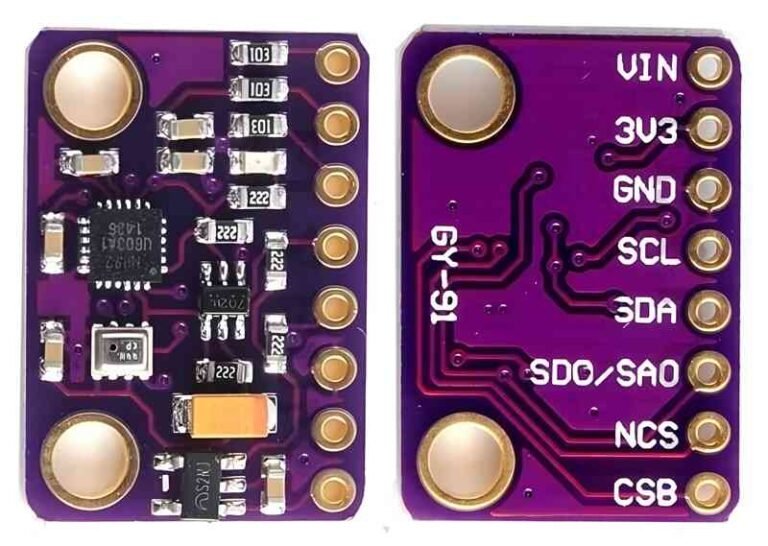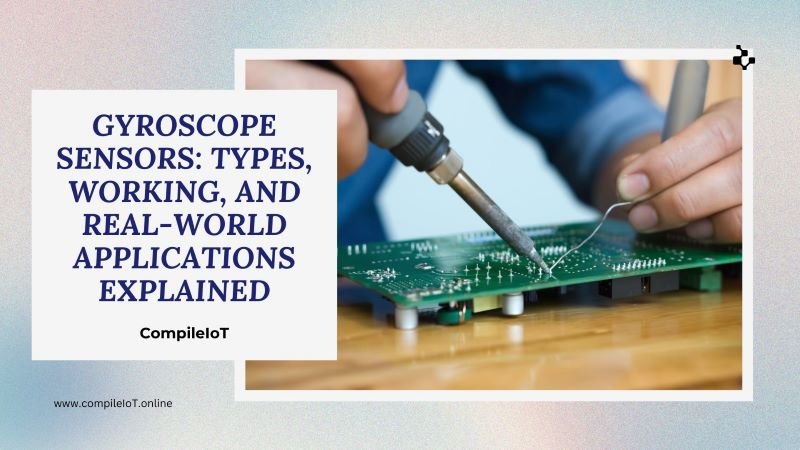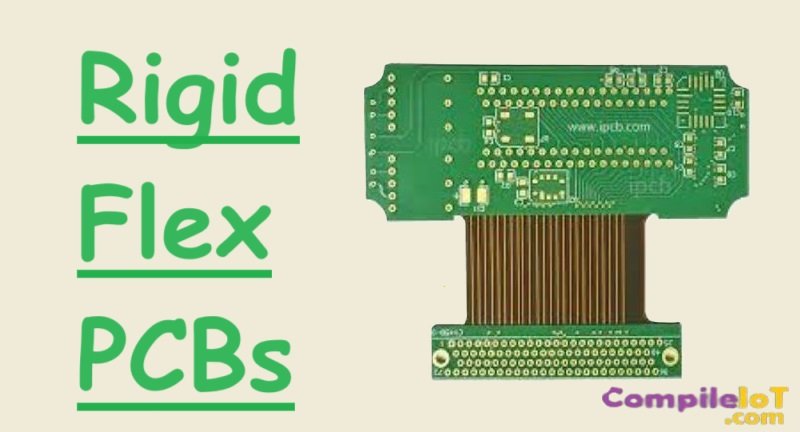Gyroscope Sensors: Types, Working, and Real-World Applications Explained
Gyroscope sensors are essential components in modern technology, known for their ability to measure and maintain orientation. Found in devices ranging from smartphones to aerospace systems, these sensors allow precise motion detection and stabilization. They are particularly useful in applications where tracking orientation, rotation, or angular velocity is critical, such as in drones, gaming consoles, and vehicle stability systems. As technology advances, gyroscope sensors are becoming smaller, more accurate, and more accessible, expanding their use across a broad range of industries.
What is a Gyroscope Sensor?
A gyroscope sensor is a device that measures angular velocity and orientation based on the principles of angular momentum. By detecting changes in orientation, gyroscope sensors help stabilize and orient objects in various applications. Typically, these sensors work by measuring the rate of rotation around an axis, enabling them to track the direction of an object or maintain balance.
The concept of gyroscopic motion dates back to the early 19th century, with the first mechanical gyroscope invented by German scientist Johann Bohnenberger in 1817. This early version was initially used for navigation. Later, in the 1850s, French physicist Léon Foucault improved the gyroscope design to demonstrate Earth’s rotation. Over time, gyroscopes evolved from large mechanical devices to compact electronic sensors with the advent of Microelectromechanical Systems (MEMS) technology. Today, MEMS gyroscopes are widely used due to their small size, affordability, and accuracy, revolutionizing their applications in consumer electronics, automotive, aerospace, and robotics.
Working Principle of a Gyroscope Sensor
The core of a gyroscope sensor’s operation lies in the gyroscopic effect, which is based on the principle of angular momentum. Angular momentum, a property of rotating objects, describes how an object resists changes to its orientation. When a spinning gyroscope experiences an external force, the orientation of the rotation axis will attempt to maintain its original position, creating stability. This property is what allows gyroscopes to detect changes in orientation and measure rotational movement accurately.

Overview of How Gyroscope Sensors Detect and Measure Orientation and Angular Velocity
Gyroscope sensors detect orientation by measuring the rate of rotation along different axes. When an object equipped with a gyroscope sensor changes its direction, the sensor picks up the rotational movement around one or more of its axes. These measurements are converted into electronic signals, allowing for precise monitoring of angular velocity. By continuously tracking these changes, the sensor provides real-time data on the object’s orientation relative to a fixed point or plane.
Common Methods Used in Modern Gyroscopes (e.g., MEMS Technology)
Modern gyroscopes often rely on MEMS technology, which involves creating tiny, intricate components on a silicon chip. MEMS gyroscopes work by using vibrating elements that detect changes in Coriolis force as the device rotates. When the sensor rotates, the direction of vibration shifts, and this shift is measured to determine the rate of rotation. MEMS gyroscopes are compact, cost-effective, and energy-efficient, making them the preferred choice in many modern applications, from smartphones to automotive systems. Other advanced methods, like Fiber Optic Gyroscopes (FOG) and Ring Laser Gyroscopes (RLG), offer high precision for specialized applications, such as in aviation and spacecraft navigation, where minimal drift and high accuracy are crucial.
Types of Gyroscope Sensors
Mechanical Gyroscopes
Mechanical gyroscopes are the earliest type of gyroscopes, consisting of a spinning wheel or disc that resists changes in its orientation due to angular momentum. They provide stable orientation data, making them suitable for applications requiring high reliability, such as marine and aviation navigation. However, mechanical gyroscopes are larger, costlier, and have more moving parts, which makes them prone to wear over time.
Vibrating Structure Gyroscopes (MEMS Gyroscopes)
MEMS gyroscopes use vibrating structures on a silicon chip to detect changes in orientation based on the Coriolis effect. These gyroscopes are compact, affordable, and widely used in consumer electronics like smartphones, drones, and gaming consoles. Though less precise than some other types, MEMS gyroscopes are ideal for applications where size and cost are key factors.
Fiber Optic Gyroscopes (FOG)
FOGs use light traveling through optical fibers to detect rotation based on the Sagnac effect. They offer high accuracy, are resistant to environmental factors like temperature and pressure changes, and have no moving parts, making them durable. Fiber optic gyroscopes are commonly used in military and aerospace applications, where precision and reliability are essential, though they are relatively expensive.
Ring Laser Gyroscopes (RLG)
Ring laser gyroscopes utilize lasers in a triangular or square-shaped cavity to detect changes in orientation. They are highly precise and resistant to drift, making them suitable for long-term navigation in aircraft, submarines, and spacecraft. While RLGs are highly accurate, their complexity and high cost limit their use to specialized fields requiring minimal orientation error.
Microelectromechanical Systems (MEMS) Gyroscopes
MEMS gyroscopes are a category within vibrating structure gyroscopes and represent one of the most widely used types due to their compact size, low power consumption, and affordability. They can be found in nearly all smartphones and other portable devices. Although MEMS gyroscopes are less precise than FOGs or RLGs, they provide adequate accuracy for most consumer applications.
Comparison of Gyroscope Types
| Type | Cost | Accuracy | Use Cases |
|---|---|---|---|
| Mechanical | High | Moderate | Marine, aviation |
| Vibrating (MEMS) | Low | Moderate | Consumer electronics, drones |
| Fiber Optic (FOG) | High | High | Aerospace, defense |
| Ring Laser (RLG) | Very High | Very High | Aerospace, submarines, spacecraft |
| MEMS | Low | Moderate | Smartphones, automotive systems |
Applications of Gyroscope Sensors
Consumer Electronics (Smartphones, Gaming Consoles)
In consumer electronics, gyroscopes enhance user experience by enabling features such as screen orientation, image stabilization, and motion-based gaming. In smartphones, they allow smooth transitions when the device is tilted, while in gaming consoles, they enable motion control, making gameplay more immersive.
Automotive Industry (Vehicle Stability Control, Navigation)
Gyroscope sensors are crucial for vehicle stability and navigation systems. They help detect skids or rapid changes in direction, enabling stability control systems to take corrective action. In advanced driver-assistance systems (ADAS), gyroscopes also play a role in mapping and maintaining directional accuracy for navigation.
Aerospace and Defense (Aircraft Navigation, Missile Guidance)
In aerospace and defense, gyroscopes are used for navigation and control. They allow aircraft and missiles to maintain a stable orientation during flight, providing crucial data for autopilot systems and missile guidance. High-precision gyroscopes, like RLGs and FOGs, ensure accuracy and reliability even in challenging environments.
Industrial Automation (Robotics, Drones)
In robotics and drones, gyroscopes help maintain balance, orientation, and smooth movement. Drones rely on gyroscopes for stable flight and precise maneuvering, while industrial robots use them to achieve accurate positioning and safe handling of materials, making these sensors indispensable for automation.
Healthcare Devices (Medical Tools, Rehabilitation Devices)
Gyroscope sensors are increasingly used in medical and rehabilitation devices. They help monitor patient movement, enabling doctors to analyze gait and stability for better diagnoses and treatment plans. In rehabilitation, wearable gyroscope sensors assist patients with balance disorders by tracking and improving their movement patterns.
Advantages and Limitations of Gyroscope Sensors
Key Advantages
- High Accuracy: Gyroscope sensors provide precise data on orientation and angular velocity, making them valuable for applications requiring exact measurements.
- Durability: With advances in MEMS and fiber optic technology, modern gyroscopes are more resilient, even in demanding environments.
- Compact Size: MEMS gyroscopes, in particular, offer compact dimensions, making them easy to integrate into small devices.
Limitations
- Potential for Drift: Some gyroscopes, especially MEMS types, can experience drift over time, reducing accuracy without regular calibration.
- Higher Costs for Precision Types: High-accuracy gyroscopes like FOGs and RLGs come at a premium, limiting their accessibility to industries where precision justifies the expense.
- Sensitivity to Environmental Factors: Mechanical and MEMS gyroscopes can be sensitive to extreme temperature and vibration, affecting their performance in certain applications.
Conclusion
In conclusion, Gyroscope sensors play a vital role in modern technology, providing accurate orientation and motion data across various applications. From enhancing user experiences in consumer electronics to ensuring safety and stability in automotive and aerospace industries, these sensors have become essential for precision and control. With continued advancements in gyroscope technology, such as miniaturization through MEMS and improvements in fiber optics, gyroscopes are expected to become even more reliable and accessible. As industries continue to adopt these sensors in diverse ways, the future holds promising opportunities for gyroscopes to contribute to innovation and enhance functionality in our daily lives and beyond.








